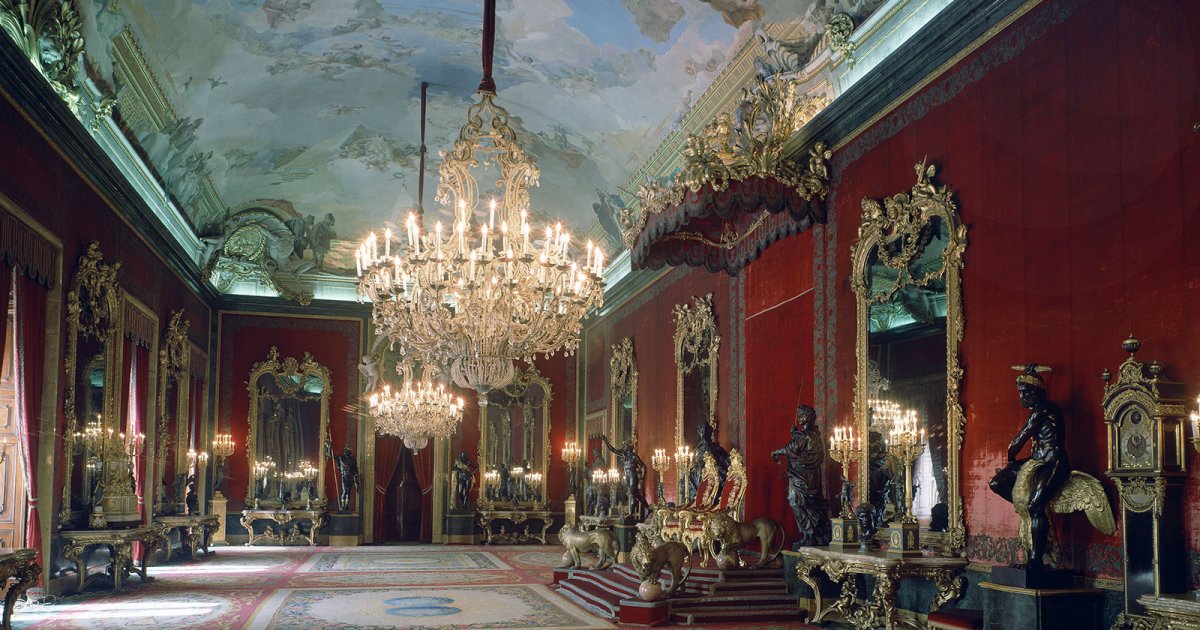ROYAL PALACE, Throne Room
 Language: English / USA
Language: English / USA
The Royal Palace admits guests in groups, but make sure you haven't chosen a day where there will be state receptions or official ceremonies, because you'll risk not being let in!
Like I said, you enter from Armory Square. Once you go past the stately entrance hall with columns, and pass through a portico, you'll reach the grand staircase with its 70 steps, truly spectacular thanks to its marble lions and celebratory frescoes.
From the landing of the main floor, you'll immediately move on to the State Apartments with the Hall of Halberdiers, which is one of the palace's most sumptuous rooms thanks to the eighteenth-century tapestries on the walls, and above thanks to the magnificent ceiling fresco by Giambattista Tiepolo depicting the classic scene of Apotheosis of Aeneas; this painting is a luminous rococo triumph.
Now you'll pass through the majestic Hall of Columns with its ceiling frescoes by Italian painter Corrado Giaquinto (who also painted the staircase decorations) and the beautiful Brussels tapestries designed by Raphael. In this room you can admire many portraits of kings and queens, as well as marble busts of Roman emperors. In fact, the main theme of the palace's decorations is royalty exerted on the world, or a kingship passed down from the ancient emperors to the kings of Spain, who ruled on two continents.
You have reached the Throne Room, which is the most grandiose of the entire palace and is still used today for official ceremonies and remains as it was in the era of Charles III, with rococo decor and large mirrors multiplying its light and splendor. Four seventeenth-century, gilt bronze lions are eloquent symbols of sovereignty. The entire ceiling is decorated with frescoes by Tiepolo in this room as well. Although he was almost seventy years old, the Venetian painter created the Glory of Spain with extraordinary freshness and fantasy, depicting a symbolic scene that combines coats of arms, flags, animals, peoples, and mythological figures to celebrate the splendor of the Spanish monarchy. Look at it carefully, because it's almost like a kind of a fairy-tale Baroque encyclopedia, and after this masterpiece the court's taste changed and moved more towards neoclassicism. One of the main neoclassical artists, Anton Raphael Mengs, then became the king's official painter and Tiepolo, considered outdated, had to settle with minor tasks until he finally died in Madrid in 1770.
FUN FACT: during the Hall of Columns' first years, the royalty would celebrate the "Lavatório y comida de los pobres" every Holy Thursday, where they fed and washed the feet of 25 poor men in front of the highest Spanish authorities.



